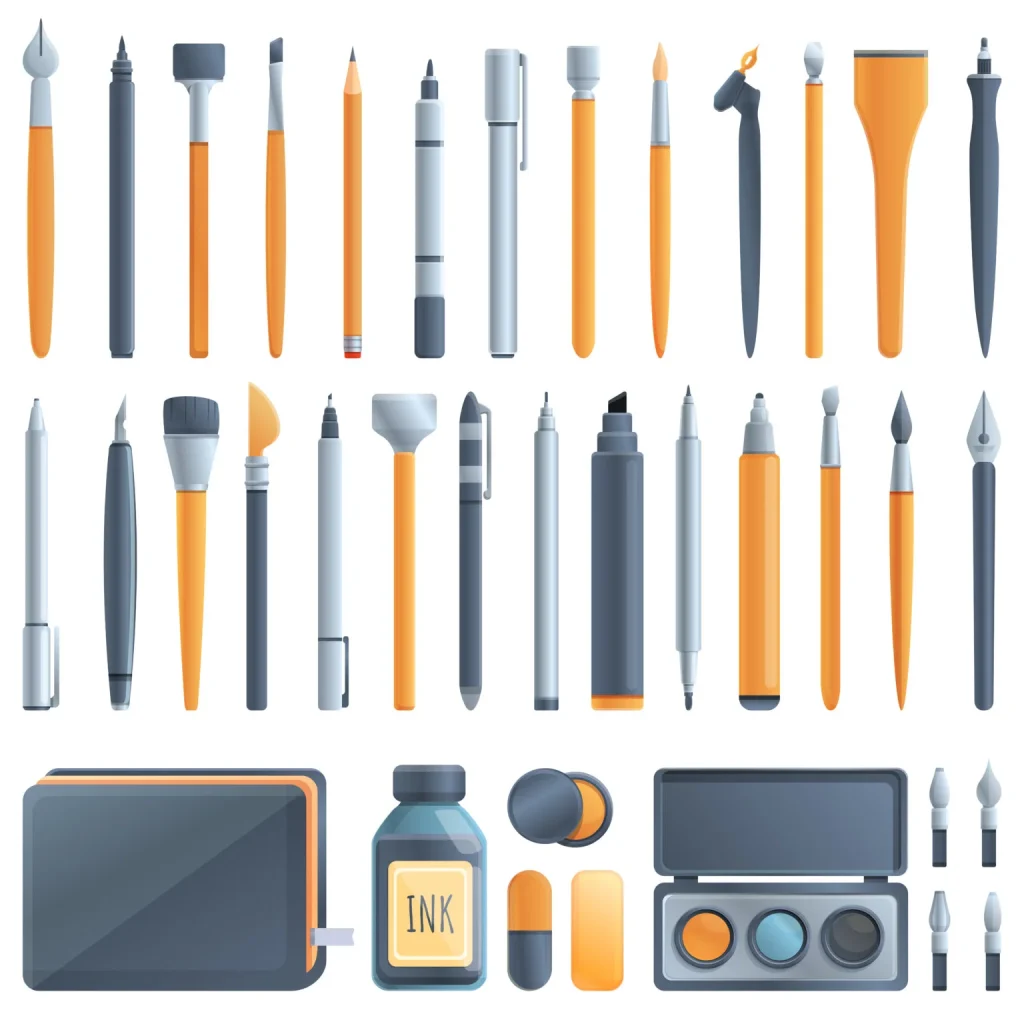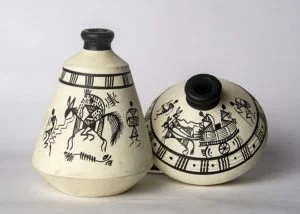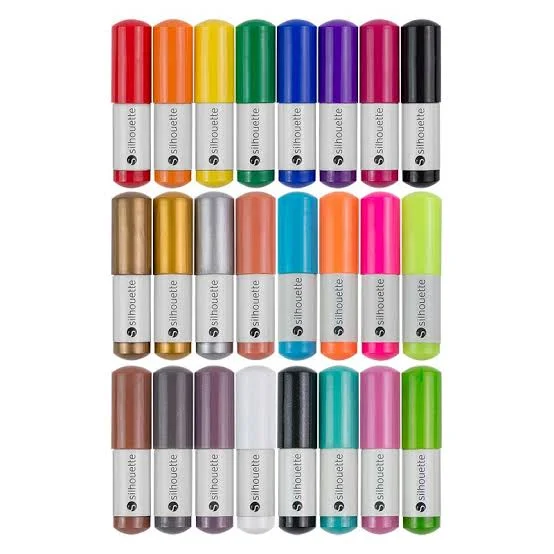What is Calligraphy?
Calligraphy is the art of writing aesthetic words. It’s considered a part of art because it acquires skills and patience to learn.
You can practice Calligraphy from a brush or pen, depending upon which you’re comfortable with. For a more appealing presentation, colours and glitters too can be used. All you’ve to do is learn to play light with the strokes that go thick and thin all along. It’s so satisfying to watch as well. People easily get confused about cursive writing, but calligraphy is nothing like cursive writing.
Types of Calligraphy
Calligraphy has evolved over time all over the globe. Types of Calligraphy are –

Pointed Pen
This type of Calligraphy is mastered with a pointed pen nib. Moreover, it is available with a distinct nib in a separate holder. Pointed Pen calligraphy type is beneficial in achieving thin hairlines and thick strokes. It’s quite fun as well as therapeutic. Moreover, this calligraphic style is versatile and dynamic. So, one can practice it for writing even on rough and poor covers. It improves its foundation by practicing the basics. Some examples are –
- Roundhand
- Spencerian
- Engravers
- Copperplate
Broad Edge
You should use flat tip nibs to practice for Broad Edge. You should keep the pen at a 0-degree angle for a thin line. Moreover, you can draw a straight line as well. While going down at the same angle produces a thick line. All the thick and bold writing styles like Gothic Scripts, Blackletter, Italic, and Uncial falls under this calligraphy type. Broad Edge Pen has two parts –
- Pen holder
- Broad edge nib
Faux
You can apply Faux Calligraphy type with different writing instruments including chalk, marker, or even the ballpoint pen. Faux style is writing words in cursive or imitating the calligraphic style. It’s also called fake calligraphic style. It’s simple and fun to practice. Also, the magic is created by sharpening on adding the thickness of the downstroke. So, you can use it for the following material to practice faux calligraphy type –
Brush Pen
You can do Brush Pen Calligraphy type with a Calligraphic pen or marker having flexible tip that is long tapered with steady ink flow. This calligraphic style is super affordable because it requires just a pen and paper.
If you want a light stroke, you don’t really have to include much force on the pen while stretching upward. However, for a thick stroke, while proceeding downwards, you require to use some pressure on the pen.
Western
Western Calligraphy type came in the 10th century and is of many different types popular in the western hemisphere of the globe. Different forms are –
- Modern pointed pen
- Traditional pointed pen
- Broad edge
- Faux
- Brush pen
It was mostly used in the Roman empire. However, the old style of western calligraphy type uses-
- Brush
- A flat ballad
- Water-based ink
- High-quality paper
- A round-nipped pen
- Parchment
Eastern
Eastern Calligraphy type holds the eastern part of the globe, including China, Japan, and Korea. It is considered of high value in Asian countries; therefore, Calligraphers were honoured. Nobles and officials learned the art for higher stature. Eastern calligraphy has shorter manuscripts than western calligraphy.
Islamic
You can observe its writings and techniques inscribed in the Arabic script. That’s why it applies to dip pens and broad nib pens. Islamic calligraphic styles in India, Ottoman, Persian, Arab, Afghan, and Pakistan are influenced by this style. Its mainly used for religious purposes in writings on a mosque or holy books. The Ottoman era was the peak of the development of the Islamic calligraphic style.
Benefits of Calligraphy
Stay creative and mindful
One of the biggest benefits of calligraphy is that it helps you start creative and mindful. If you are running out of ideas or feeling bored, you can use calligraphy to do some light art. It eventually brings out creative ideas and helps you stay active and mindful. You’ll feel a lot more productive and happy after doing it.
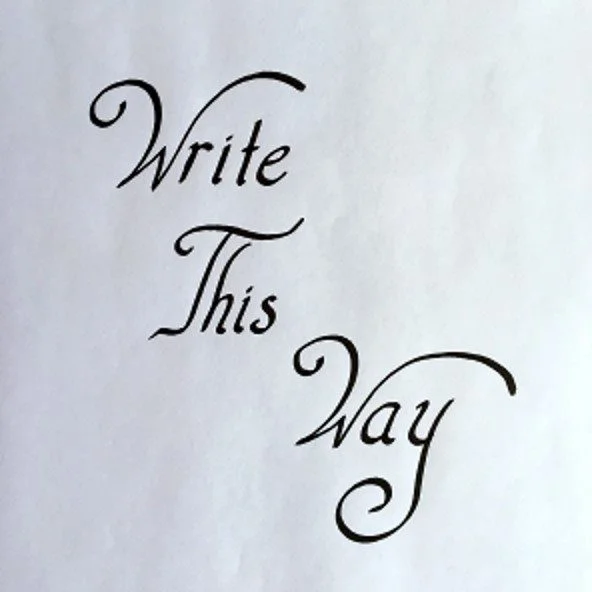
Calligraphy also helps you be present at the moment and focus on one task, and it’s so amusing. It activates brain cells and boosts learning and memory power. Therefore, you should take a break from work often and try this out.
Is therapeutical
Another Calligraphy benefit is that it calms down thoughts and relaxes the mind. Due to its psychological benefits, doctors suggest people dealing with depression or anxiety practice Calligraphy. It doesn’t put much pressure on the brain, it just lets ink flow swiftly, and the process itself is beautiful. Calligraphy is a therapy that cures, heals, and brings out your best self. It boosts your spirit by cleansing your aura.
Can help you make money
One more calligraphy benefit is that you can earn money while following your calligraphy passion at the same time. You can teach others through workshops, live shows, and courses. You can sell your writing style to brands that want to have unique and captivating logos. Your writing can be used in banners, billboards, and flyers to stand out. You can also create calendars, journals, bullet diaries, and doodle art. All of these are so much in demand in the market. All your hard work and effort will pay you.
Helps you visualize your thoughts
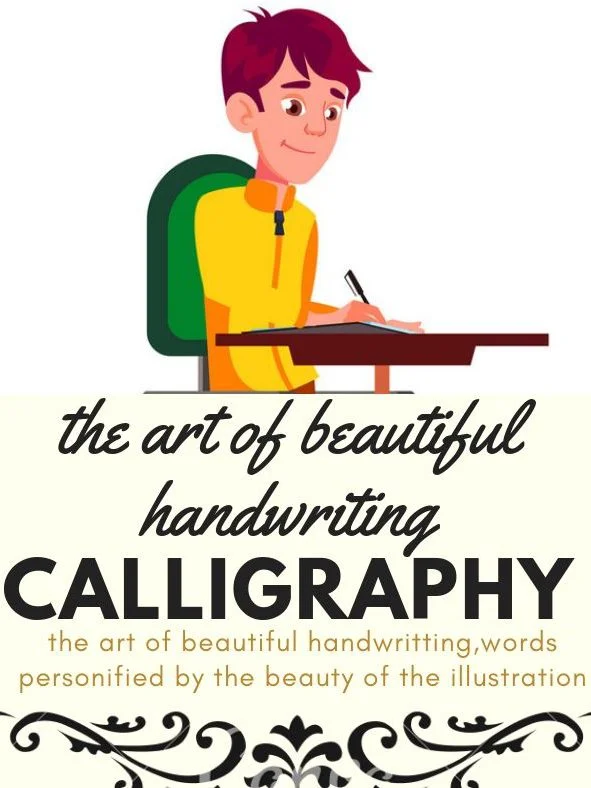
It is chaotic when you go through the rush of thoughts. In such a case, take a pause and run your pen; let words form themselves on paper. It helps declutter thoughts, frame them well and make space for creativity. It’s the best way to visualize your ongoing thoughts and be aware of them and understand yourself a bit better.
Preserve our heritage
It was found a way past before, even when we weren’t born. It has just kept getting better with innovation and even more beautiful with time. So, technically it becomes our duty to preserve it. Pass it on to our children and their children, and the heritage prevails. It has always served us in the best possible way, so shall it continue.
Therefore, we should save our history and be serviceable to our coming generation. It is made with love, for love, and may it always serve love to our humanity.
Send personalized hand letters
You can send personalized letters to your dear ones to show adoration and fondness towards them. People love when someone does little things with so much love and detail. These little yet thoughtful efforts are worth a treasure.
Moreover, this can improve your relationship with them and bring you even closer.
Customize peculiar wedding cards and invitation cards
If you wish to make your auspicious wedding day even more special, going for calligraphic skills will make the difference. You will be able to send your handwritten invitation to people of your inner circle. You can customize it based on per person to make them feel worthy and notable. It represents authenticity and your peculiar nature.
Spend a moment with yourself
Pull yourself away from the screen and crowd of people. Take a moment with yourself, towards yourself. Find yourself in a serene place, be present there, and feel the moment.
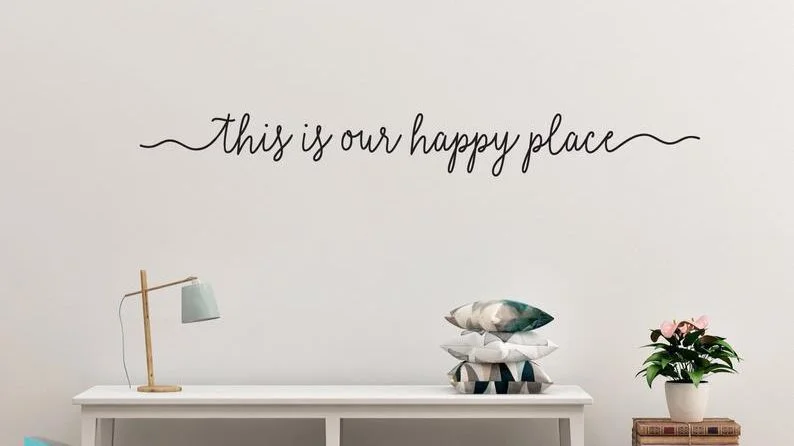
When you’re alone, with no one to accompany you, don’t feel sad. Rather enjoy this solitude and do some calligraphy. It’ll make you a lot happy, and your sadness will fly away for sure.
Priceless
It doesn’t require you a big budget to start. All you need is a pen, brush, ink, or some color and paper. You can also do it in your diary or journal to make it look attractive. It won’t cost you much. Something you can do it for free as well if you’ve got these things already present in your stationery. The outcome it brings is priceless. All you need is patience, dedication, and a curious mind willing to learn.
Decorate your interior
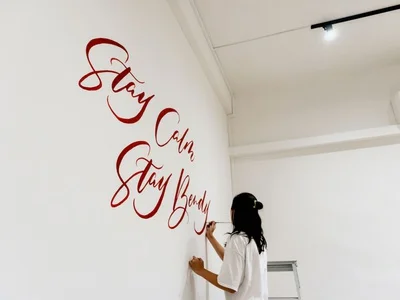
You can decorate your walls by hanging your own hand calligraphed decors. You should let your walls speak of your personality. Let your calligraphic style and form be your reflection. You can also decorate your mugs, pillow covers, tables, etc. You can write your favourite quotes and let them motivate you every day. Let it be your go-to place when you want to refill yourself.
History
As humans began to express their emotions through gestures, writing became a visual medium to share their thoughts. Earlier, people wrote with anything sharp or pointed, like rock or twig. Calligraphy, which originated in Shang Dynasty in China, gained popularity during Han Dynasty.
Over time different styles of writing were found all over the world. Fonts inspired from Roman, Chinese, Italic, Greek, Indic are some Calligraphy fonts present on the digital platform. Today it is popular all the globe. It began expanding its popularity in China originally, later in parts of Japan, India, Tibet, and Europe.
In East countries like China, Japan, Vietnam, and Korea, parts of East Asia countries, it was initially found on surfaces of jades in pictograms and ideographs. In Europe and India, calligraphy began to print holy text; therefore, it seems to be around 3,000 years old. It only came into knowledge in the 15th century in Europe.
However, since then one can witness Calligraphy practice in specialized musical scores, cards, and handwritten books. Today, its practice is of two types –
- Modern style
- Traditional style
Modern Calligraphic styles, like Copperplate, Spencerian, Italic, Blackletter, etc., doesn’t follow the traditional rules. In Traditional Calligraphic forms, however, you are expected to go by the defined rules. In traditional style, letters have some specific height, angle, thickness, and strokes. Modern style is free from all these restrictions. You can easily play around and add your own unique art.
How to write Calligraphy?
Pen
The first thing to write calligraphy is to pick up is a calligraphy pen. It comes with a holder and a nib. With different calligraphic styles and practices, a different pen is required. For modern and brush style forms, brush pens are needed. You should try for its ink flow and hardness before writing calligraphy using this pen. Broad-edged dip nibs are used for traditional western style script writing. Look for brands before choosing the pen. A good brand has good nibs with the exact stiffness that is needed in writing. Also, it has long-lasting ink flow.
Calligraphy markers are good for writing light calligraphy. They are good for small projects like scrapbooks and card writing. It’s easy to use and comes at a lower price. Fountain pen-type calligraphy pens come in handy for beginners. It can be used in day-to-day writing. It gives thick and thin style in writing.
Ink
Ink is crucial for the nib pens; without it, nothing could be written. You should refer to any reliable ink that glides fluently. Your choice of ink partially matters on the calligraphic type that you are practising and completely depends on the type of paper you use along with the tool that you are using for the calligraphic style. Some of the top preferred inks are for calligraphy writing are–
- India Ink is carbon black, water, and gum, which can be used to refill pilot parallel pens and dip pens.
- Sumi, which is a Japanese stick ink, is composed of soot blended with animal glue and other different ingredients.
- Chinese stick inks – which usually are used in Chinese calligraphy.
Colour
Many calligraphic artists use colours to create artistic charm to the work. It gives it an elegant look. You can try brands like Winsor and Newton, Old Holland, Sennelier, Schminke. Dry colours or traditional colours are less good at flowing with the pen. Moreover, Calligraphy paint or colours available for its purpose especially should be purchased from the market.
Paper
For writing calligraphy, paper is a must. You can also practice it on a sketchbook or any notebook. But for proper professional calligraphy, you need some good quality paper based on the thickness of the paper. Different papers are available in the market that can be used for various calligraphic styles, like –
- Watercolour paper
- Cartridge paper
- Bleed proof marker paper
- Layout paper
- Tracing paper
- High end
- Smooth office paper such as HP Premium Choice, and
- Calligraphy pads marked with precise lines.
Calligraphy pads with good quality pages are available in the market too for practising calligraphic art.
Pencil, Eraser, and Ruler for Calligraphy Writing
When writing Calligraphy alphabets, a pencil, eraser, and ruler are required. Calligraphy is followed by some strict lines, measurements, and spacing, and for that ruler, pencil and eraser will be required. If you are a beginner or a practitioner, you’ll always need its help. So, you should always carry them in your box.
How to learn Calligraphy?
Get Calligraphy book
There are so many calligraphy books in the market available for practising it. To begin with the fundamentals, you are required to manage your writing angles and unique strokes. A calligraphy book will help you a lot. After all, they have instructions discussed to assist you with the art.
Practice regularly
Practice is important for developing muscle memory. Slow and focused practice will help retail the memory and make you better at it. Have hope and persistence while you take this, and ultimately, everything will finally be getting finner over time.
Choose right tool
Choosing the right tool for your hand can be a challenge, but once you’re done selecting, you’ll be good to go. But the actual conflict is discovering the ideal set which goes well with your hand and works easily. Dip pens are of 2 kinds –
- Straight
- Oblique
The oblique pen helps in an angular moment of the pen and helps in good calligraphic style.
Choose a style
There are so many styles of scriptwriting. Choose which you find easy or creative to start with. As a beginner, you can start with something easy and handy. Brush pen calligraphy has got an effective style that is easy to practice. You shouldn’t skip the basics of lettering if you’re serious about learning it.
Pick a hand
Once you’ve chosen the style to practice and got good with the calligraphy, you can move towards picking a hand. You can now give a loose to yourself and enjoy your style of writing. You can create your handwriting style as a calligraphic style once you start enjoying the process.
Paper on purpose
Paper is the canvas you gotta create your artistry. So, they must be of good quality and something that inspires you to create. Commence working on the grained paper surfaces. It gives the letters a great texture. Beginners can first start with simple paper in their sketchbooks for clean work.
Do’s and Don’t’s
Do’s of learning calligraphy
- Pick a good set of tools for practising calligraphic styles and forms.
- Learn the basics of it.
- Built the foundation and then moved ahead with the next step.
- Use good quality paper. A smooth and thick paper will help pens to move smoothly.
- Try traditional ways of calligraphy first before going for the digital.
- Research about the materials to use before purchasing them from the market.
- Try different fonts of calligraphic art and have fun doing it.
Don’t’s of learning calligraphy
- Don’t rush the steps and skip to the next part.
- Don’t use poor quality of product from the market.
- Never let your nibs dry out. Keep refilling it.
- Don’t force yourself into it if you’re least interested in it.
Which Calligraphy Type is best for the beginners?
Roundhand
Many calligraphers find it easy to begin with is the round hand calligraphy. It’s like practising your regular English writing workbook. You can practice Calligraphy fonts with the round hand even if you don’t know how to catch the brush and is a complete fresher. It assists at the beginning including the basics.
Faux Calligraphy
We’ve all written cursive letters during our schooling. Writing faux calligraphy for beginners can be easy as all they’ve to do is copy the Calligraphy letters. You know how to hold a pen, and it becomes even easier to do faux style as all it needs is to use any kind of pen, pencil, or chalk to practice. If you are just a fresher, having control on a nib pen for it might become hard initially. Therefore, it’s good to start with faux style form.
FAQs
What is a calligraphy pen called?
Pen with which calligraphy is done can be of different name based on the calligraphic style someone is practising. However, it’s usually referred to as ‘Calligraphy pen.’ There are different pens in the market for it- Brush pen, Fountain pen, Marker, Broad nib pen, and Pointed pen.
What are Calligraphy pens used for?
They are used for Calligraphy writing and artistic lettering.
What are Calligraphy markers?
These markers are the tools designed for calligraphy. It has smooth tips good for beginners to start practising different styles.
What are Calligraphy nibs?
These nibs are made of metals that are attached to the holder of the pen. There are broad and pointed nibs available in the market.
Can Calligraphy ink and pen be used for tattoos?
No, a calligraphy pen can’t be used for making tattoos. You can consult a tattoo instructor for the same.
Can Calligraphy improve your handwriting?
Yes! Practising calligraphy on a regular basis can help improve your handwriting. It helps you slow down your writing process focus on one letter at a time.
Can Calligraphy be a Career?
Yes! Calligraphy can be a full-time career as it pays well, and there are so many uses in modern times. As people do prefer handwritten letters, and customized cards are prevalent, which pays you a handsome amount of money.
Conclusion
Art doesn’t judge anyone. Whatever you create out of love is art. You should be willing to learn and bring out your magic. Start practicing calligraphy and see improvement in your complete being. Art helps you in becoming more peaceful in your skin and connecting to your natural self.
Share with your friends

